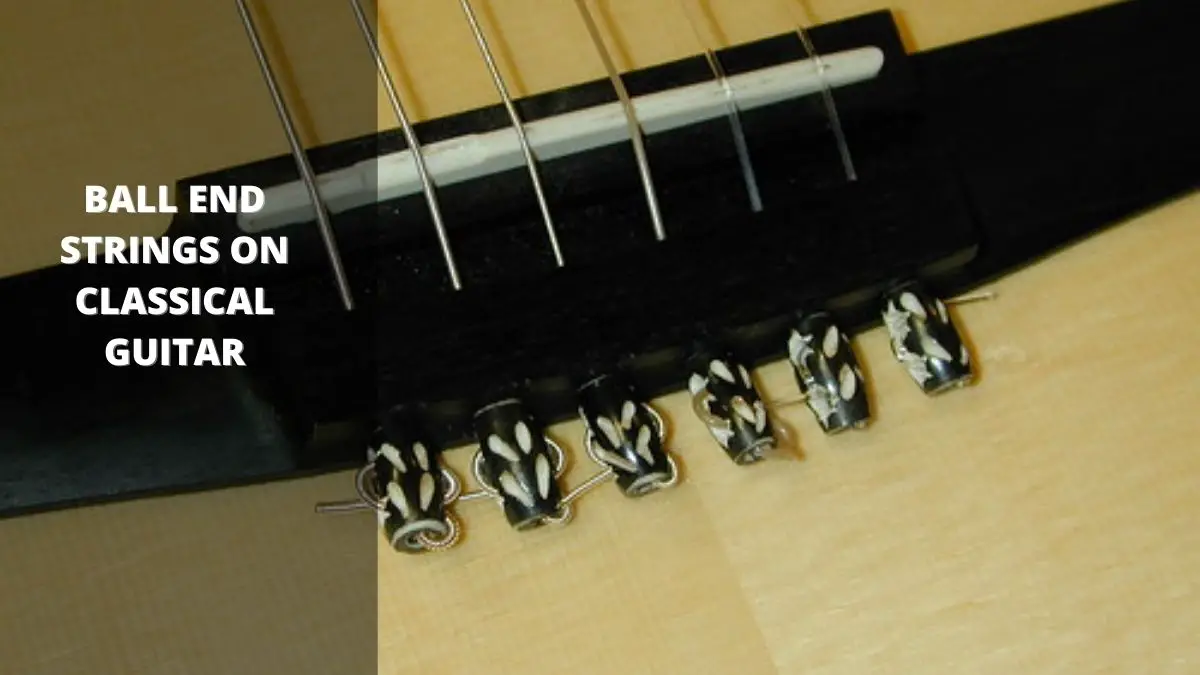Stringed instruments have been around for centuries, with many different types and variations. One such variation is the ball end string.
Ball end strings have a small metal ball on the end of the string, as opposed to a plain string with no-ball. This ball is inserted into a small hole at the top of the instrument’s neck and helps secure the string in place.
Ball end strings are often used on guitars but can be used on other instruments as well. This ball fits into a groove in the bridge on the classical guitar. Ball end strings are easier to put on and take off than loop end strings.
The ball end string was invented in the early 1800s by a man named John Isaac Hawkins. He was a musician and an instrument maker. He was looking for a way to make the string on his guitar easier to change. The ball end string is still used today on many instruments.
Can I put ball-end strings on a classical guitar?
If you are wondering whether you can use ball-end strings on a classical guitar, the answer is yes. They provide a more secure connection and make installation and removal easier.
How do you put ball-end strings on a classical guitar?
Installing ball-end strings on a guitar can be a bit confusing for a beginner. There are a few simple steps that you can follow to make the process easier.
- First, remove the old strings from the guitar.
- Make sure that the new strings are the correct size and type for your guitar.
- Thread the ball-end end of the string through the tuning peg hole, and then through the 6th or 7th fret on one side of the guitar.
- Then, thread the string through the last two or three frets on the opposite side of the guitar.
- While holding both ends of the string tightly, push down on the tuning peg to affix it in place and tighten the nut at that end.
- Now, thread the string through the last two or three frets on the opposite side of the guitar.
- While holding both ends of the string tightly, push down on the tuning peg to affix it in place and tighten the nut at that end.
- Continue repeating these steps until the end of your string reaches the tuning peg.
- Tighten the nut at both ends of your string, and you’re done!
Benefits of using ball-end strings on a classical guitar
One of the many benefits of using ball-end strings on a classical guitar is that they are easier to install. As such there are many other benefits that include:
- Unlike conventional strings, there is no need to wrap them around the tuning pegs. This can save time and make the process less frustrating.
- Ball end strings also stay in tune longer than conventional strings. This is because the ball at the end of the string prevents it from unraveling.
- Ball end strings are more durable than conventional steel strings and can last for years.
- They retain the natural sound of your guitar, avoiding the need to replace it with a new instrument every year or two.
- Ball end strings are more stable on your guitar, eliminating the need to tune up and down to hear each individual note.
- Ball end strings are easy to install and require no special tools or skills.
Conclusion
Ball end strings are a suitable option for classical guitar players. They provide a secure connection to the bridge and allow for accurate intonation.
Additionally, they produce a warm, rich tone that is ideal for classical music. If you are looking for a new set of strings for your classical guitar, consider giving ball-end strings a try.


